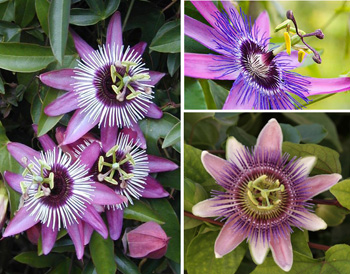Hello Faith Pals,
Happy birthday to the Uniting Church! 43 today! You could bake a cake if you were feeling adventurous, or felt like baking. You wouldn’t need to decorate in black, white and red (they may be misunderstood to be football team colours!).
Now, Rob Weir emailed me his memories of the Uniting Church’s foundation:
‘I remember this day well as I was confirmed at Deepdene Uniting Church (Paton Memorial Church) on 26/6/1977 when the Uniting Church was only 5 days old! … Rev Donald Macrae was the minister. I remember him as a lovely man who had a long haired son called Alistair (now Rev Alistair Macrae).’
How exciting is that! I though of the minister, poor Don Macrae probably had to phone around the weeks before to find out if there were new Confirmation certificates, or new procedures. Rob sent me a photo of the Bible he was given that day, with a message about his confirmation in it. Rob would have been one of the first to be confirmed within the Uniting Church.
https://www.youtube.com/watch?v=e399g0ORAdo
I received a lovely photo from Janet Soo. She wrote:
‘Thought you would be interested to see a cut golden tamarillo.I find it quite interesting how plants and fruits can be used to tell biblical stories.I quite often find a cross when I cut a tomato,and we all know the story of St.Patrick using a clover leaf and missionaries using passion fruit flowers.’
The Symbolism of the Passion Flower
Most of the rich symbols of the Passion of Our Lord have their roots in the Middle Ages, but there is one that comes from the American Continent. It is the Passiflora, passion fruit (in English), fruit de la passion (in French), fruta de la pasión (in Spanish) or flor-da-Paixão or flor de maracujá (in Portuguese).
 The passion flower has many symbols of Christ’s Passion
The passion flower has many symbols of Christ’s Passion
When the Spanish and Portuguese missionaries and explorers came to the Americas in the 16th century, they were charmed by the exuberant beauty and features of this perfumed flower and immediately associated it with elements of Christ’s Calvary. The Jesuits named the flower Flos Passionis or Flor de las Cinco Llagas, Flower of the Five Wounds. They brought it back with them to Spain and later the fruit found its way to other parts of Europe and the world.
In the flower of this purple-colored fruit one can find many of the symbols of the Passion. For this reason the early Catholic missionaries saw it as a gift of God to help them in their work of teaching the Indians to understand the Passion of Christ and the Crucifixion. Even the flower color – mostly purple in hue – was remindful of the liturgical color of Lent. Let us look at the many symbols found in the Passion Flower:
• Its central pillar represents the column where Our Lord was so brutally flogged, and the many slender tendrils surrounding its base were likened to the cords and whips used in the Scourging.
• The three top stigma, each with a roughly rounded head, symbolize the three nails used to drive the spikes into Our Lord’s flesh.
• The five anthers are symbolic of the five Sacred Wounds and the circle of filaments that compose the dramatic center of this flower represent the Crown of Thorns.
• The rays within the flower form a nimbus, representing Our Lord’s divine glory.
• The leaves on many of these plants are shaped like the spear that pierced His Heart.
• The 10 petals represent the 10 apostles who forsook their Master and fled, omitting Judas, the traitor, and St. John, who remained with Our Lady under the Cross.
A symbolic meaning was found even for the often round shape of the passion fruit itself: it represents the sinful world that Christ came to save by the supreme Sacrifice of His life.
The Europeans soon discovered the value of this marvelous plant and took up its use, especially for calming the nerves.
It is yet another symbolic aspect of the Passion Fruit: Like Christ who came to relieve the sufferings and anxieties of fallen man, so this marvelous plant relieves the angsts and pains of those who take advantage of the properties imbued in it by God the Creator.
love is all around you
Love is all around you my friend, all you have to do is reach out and take hold of it. You have no need to consume it for it will consume you, enveloping you like a blanket of peace, warmth and well-being. You cannot buy it, steal it or barter for it, but once you find love you can only give it away to others.
Other people can only ever give you a temporary measure of the love they have within themselves. However, the One from whom love proceeds can give you this love to last forever. All you need to do is believe and you will receive. Love is not a feeling, but a commitment. Love is not an emotion, love is caring.
When the one you set your love on is unwell, love does not demand satisfaction, but rather tends to the needs of the other. Love does not boast nor does it set the other on a pedestal. Love embraces and never shuns, is firm but not overpowering.
Love remains in control even when the other is out of control. Love always seeks to keep the peace and remain calm when the other person is depressed or on a high. Love never fails. No matter how you perceive Him or what name you have for Him, God is love!
Written by John P. Wallace